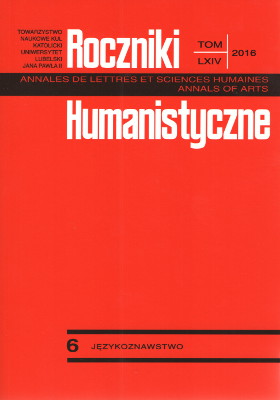Structurele toekomst, predicties, natijdigheid en emergente grammatica: Een bijdrage tot de discussie over panchronie
Structural future, predictions, posteriorty and emergent grammar: A contribution to the discussion on panchrony
Author(s): Martin KonvičkaSubject(s): Philosophy, Language and Literature Studies, Theoretical Linguistics, Special Branches of Philosophy, Philosophy of Language
Published by: Towarzystwo Naukowe KUL & Katolicki Uniwersytet Lubelski Jana Pawła II
Keywords: panchrony; diachrony; synchrony; emergent grammar; predictions; structural posteriority
Summary/Abstract: In this article, I investigate two theoretical concepts pertaining to the nature of grammatical structures. Firstly, I discuss the notion of panchrony as a non-reductionist alternative to the structuralist dichotomy of diachrony versus synchrony. Secondly, I shortly introduce the emergentist approach to language that rejects the idea of language as a static, stable system. Afterwards, I am going to show how a panchronic view of language benefits the emergentist approach. Namely, I am going to stress the importance of the structural posteriority which is often neglected in traditional grammar models and only implied in emergentist ones. The emergent nature of language, as I am going to argue, can only be described if the speakers’ structural predictions are taken into account as well. Apart from combining the structural anteriority, i.e. diachrony, and structural contemporaneity, i.e. synchrony, structural posteriority has to be taken into account as well. In that case, every speaker in every utterance builds upon their earlier linguistic experience and thereby—to some degree—forms their future utterances.
Journal: Roczniki Humanistyczne
- Issue Year: 64/2016
- Issue No: 5S
- Page Range: 63-82
- Page Count: 20
- Language: Dutch

